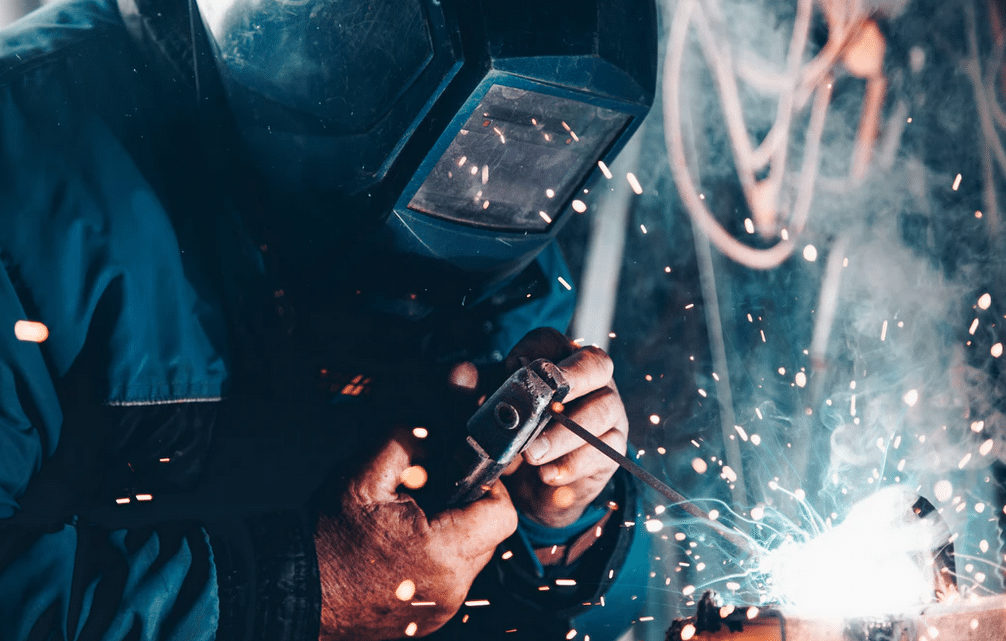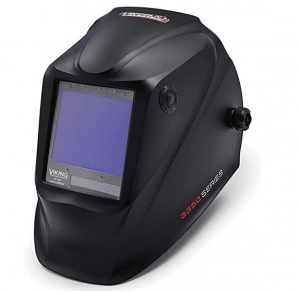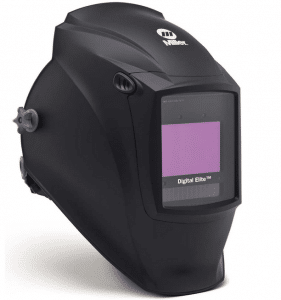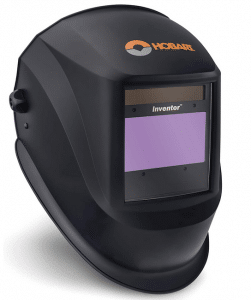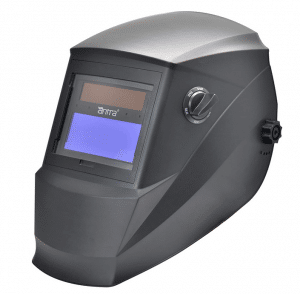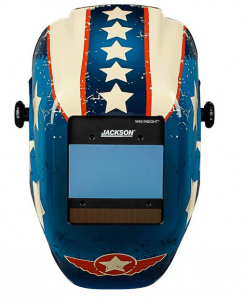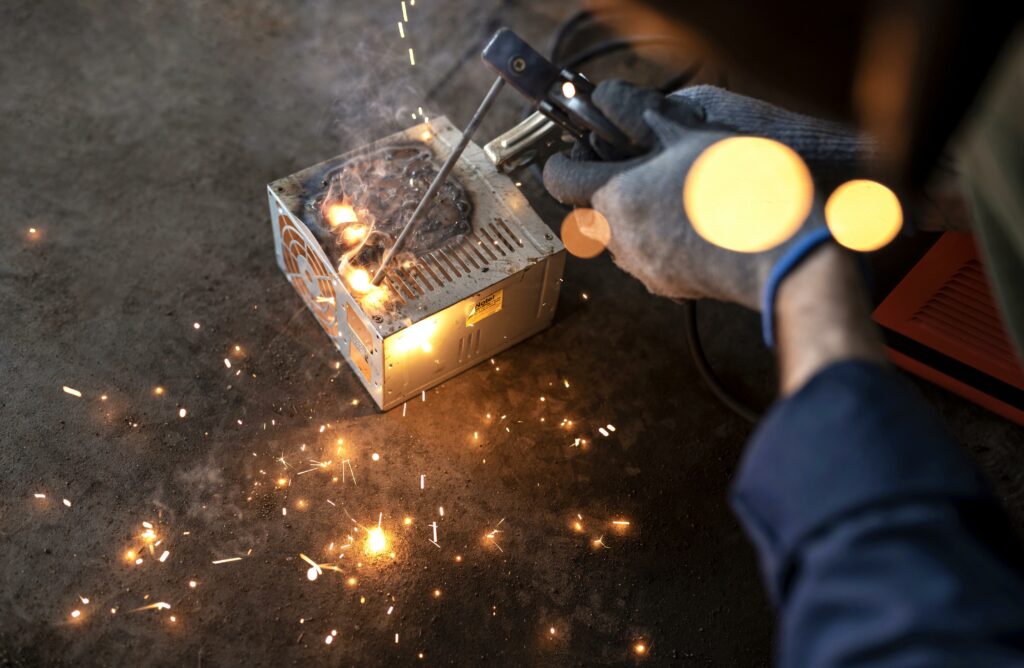Looking for the best welding helmet for your needs?
Whether you’re a beginner or an experienced welder, finding the right helmet is crucial. Explore top-rated brands like ESAB, Lincoln Electric, and Hobart, offering a range of options from solar-powered to battery-powered helmets.
If you’re working on sensitive projects or need true color clarity, consider helmets with advanced sensors and crystal clear lenses. For TIG or MIG welding, you’ll want a helmet that offers excellent arc protection and a comfortable fit.
Don’t compromise on safety – prioritize impact resistance, headgear comfort, and a wide viewport for precision. Whether you’re on a budget or looking for the best in the market, this roundup covers the best welding helmets for every welder, ensuring your protection and comfort while you work with tools like the TIG torch, MIG welder, plasma cutter, or even stick welder. Discover the perfect welding helmet on Amazon today, and weld with confidence.
Regardless of whether you’re a hobbyist or you hope to make welding your career, you’re going to need the proper safety equipment to prevent injury to yourself and others. This article focuses on not only how to pick the best welding helmet but what you need to look out for while picking them.
If you’re in a hurry, we’ve compiled the top 3 best welding helmets for you here:
Here Are Our Recommendations For Top 6 Best Welding Helmets
Best Welding Safety Gear
Personal protective equipment for welding includes:
- A helmet
- Eye protection
- Masks/respirators
- Heat resistant clothing
- Ear guards
- Safety boots
- Insulated gloves
In this guide, we’re going to focus on why a helmet is the best choice for full head protection. We’ll discuss how to find the best welding helmets based on several factors and features, as well as for those on a budget.
Lincoln Electric K3034-4 VIKING 3350 Auto Darkening Welding Helmet
- Lincoln Electric K3034-4 VIKING 3350 Welding Helmet.
- Its premium optics with lens technology creates a crystal clear, true-color view of the arc and puddle.
- Its 12.5 square inches auto-darkening lens and superior comfort with 3-year warranty only sweeten the pot.
Antra AH6-260-0000 Auto Darkening Welding Helmet
- Passive Filter with Permanent shade 13 to UV/IR, combined with double-layered auto-dimming LCD shutter, providing sufficient and accurate shade range within 4/5-9/9-13 to visible lights.
- Very light total weight, reduces head and neck stress; Fully automatic auto-darkening lens, eliminating flipping up and down the hood.
- 4 Premium redundant arc sensors, with highly responsive detecting and controlling units providing super-fast switching time and accurate auto shading, minimizing harmful radiant bypass, avoiding eye stress.
3M Speedglas Welding Helmet
- The 3M Speedglas Auto-Darkening Filter 9100XXi offers the same large viewing area as our 3M Speedglas ADF 9100XX. But thanks to improved optics, the 9100XXi ADF allows you to more readily recognize colors.
- The 3M Speedglas Welding Helmet 9100 with Auto-Darkening Filter 9100XXi can be used for Stick, MIG, and TIG welding processes. With improved optics, the 3M Speedglas Auto-Darkening Filter 9100XXi allows you to more readily recognize colors.
- This may help you focus on your welding set-up, welding technique, precision grinding, and inspection of just-completed welds. The 3M Speedglas Silver Front Panel 9100XXi houses external controls, enabling fast and easy access to the grinding and memory modes.
Jackson Safety Ultra-Lightweight Insight HXL-100 Welding Helmet
- This Jackson Safety Ultra-Lightweight HLX-100 Insight Welding Helmet is built with four independent sensors with lithium batteries, positioned to reduce the possibility of blockage during welding.
- This ADF helmet has a viewing area of 3.94″ x 2.36″ and offers an un-obstructive view during all stages of the welding process, without lifting the hood.
- With variable shades from 9 to 13, this helmet has easy-to-use digital controls and sensitivity and delay adjustments for different tasks and durations, enabling welders to enjoy enhanced visibility and color recognition.
Miller 281000 Digital Elite Black Welding Helmet
Hobart 770890 Auto-Darkening Welding Helmet
Why Use a Welding Helmet?
Firstly, why choose a helmet over eyecups, glasses, safety goggles, or other tools in their optical class?
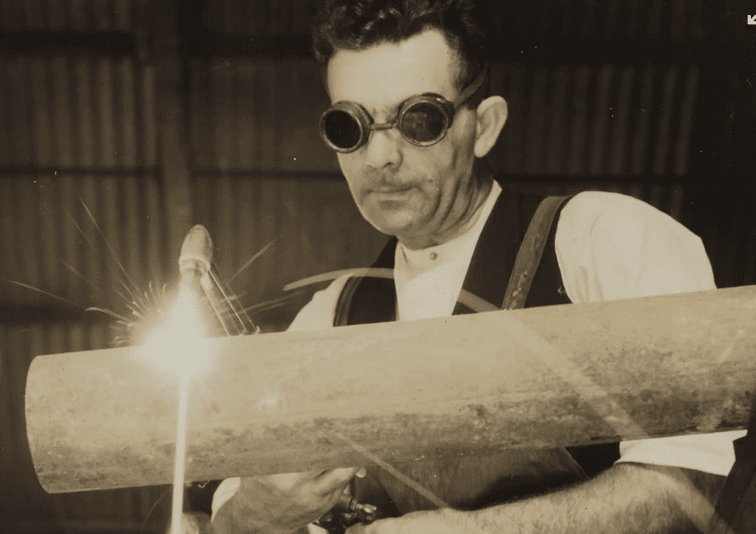
Welding involves working with extremely high heat to melt strong metals. The danger of sparks, molten metal, sharp fragments, debris, and getting burnt means that the risk of injury is almost certain if full protective clothing isn’t worn, especially on the head, face, and eyes. Simply covering the eyes is not enough when you need to get up-close to your metalwork while using a flame-throwing welding torch.
Best welding helmets not only cover the viewing area but also cover your mouth to protect you from inhaling metal particles and dangerous gases and shield your ears from hearing damage caused to workshop noise.
Possible injuries caused by welding without proper safety equipment include electric shocks, inhaling toxic fumes, hearing loss, sight damage, and serious burns.
All in all, a welding helmet is one tool that you definitely want to spend a little extra on to get the best protection. Below is some more information about picking a high-quality helmet and getting the most advanced features for your money.
How To Pick The Best Welding Helmet
Best Welding helmets have advanced a long way since the early masks that looked like buckets with a small viewing window. They now more closely resemble motorcycle helmets and feature cutting-edge technologies that ensure your senses and skin are fully protected.
Choosing the best welding helmet for you involves weighing up a few factors that we’ll discuss in this guide. However, there are a few essential qualities that all models should have. The best welding helmets generally feature:
Weight around 20 oz:
Headgear that weighs too much can lead to neck strain and cause the wearer to become fatigued. Headaches, discomfort, and fatigue can distract the worker and lead to severe injury. Hence a lightweight helmet is recommended.
Visor shade options:
You won’t always be welding in the same light conditions, but will always need to see clearly. Adjustable sensitivity, shade range, shade lens, shade level, light state, dark state, lens clarity, helmet lens, and viewing area is vital for providing clear vision as well as adequate eye protection in your headgear.
Auto-darkening technology:
protects the wearer’s eyes from sparks and flashes. The best welding helmets feature adjustable sensors that accommodate for the fluorescent lighting used in many workshops. Headgear that doesn’t take this into account can stay rather dim, making it hard to see between welds.
Tailoring to the type of job:
Nowadays welding helmets can adjust to different jobs and types of welding. But, for more niche jobs, headgear with specialist features might be needed. For example, an underwater pipework welder will need advanced high-tech digital specs with variable shade in their helmet in comparison to one worn by a hobbyist with fixed shade in their helmet making a candlestick in their garage.
These points should give you an idea of the dangers of picking the wrong helmet for different weld modes. Welding is by nature a dangerous undertaking, but wearing the wrong helmet compounds this. Permanent injury, loss of senses, and severe burns are a big risk if safety precautions aren’t closely followed.
The budget is also a factor that will come into play. The best budget welding helmets or cheap welding helmets might come with many of these qualities. However, it is safest to spare no expense and buy the best welding helmet for your money. If you don’t weld on a regular basis, you could rent a high-quality expensive helmet for short-term projects without splashing out on one to keep.
Lower priced options are okay for beginners working on small-scale projects since they won’t be wearing the helmet all the time. For professionals though, all factors (adjustable, viewing area, shade range, side windows, viewing lens, switching speed, price range, viewing window, comfortable headgear, sensitivity control) and safety issues should be carefully considered.
Important Factors for Choosing a Professional Welding Helmet

The following questions should be asked before purchasing a welding helmet that will be used on a long-term basis. These are most applicable to people who generally work in workshops on large or medium scale projects.
Is the welding helmet auto darkening?
The best auto darkening welding helmets react quickly to changes in light and UV rays to shield your eyesight automatically. Workers needn’t stop what they’re doing to adjust their visor shade – the helmet does this for them. Welders are exposed to many dangerous wavelengths of light (Arc flash), which if not properly protected against can cause ‘Arc Eye’ – an extremely painful condition where the back of the eye is burned by UV rays, similar to getting sunburnt skin.
Therefore, one of the most important factors to consider when looking into welding helmets is whether it has an auto-darkening feature. This is especially important for those who pick up their welding torch on a daily basis.
How many sensors does the welding helmet have?
Auto-darkening helmets are equipped with various helmet features one such thing is arc sensors, which allow them to react to changes in light. Typically, helmets for professionals have four sensors that deal with shade level, light conditions, and power source.
With four or more sensors, it is possible to work in more challenging environments outside of the workshop, like pipework in darkened areas. Some more basic helmets have two sensors, though there’s a risk that the visor will fail to react to flashes in time, and there’s a higher chance of injury.
What are the lens shade level options on the welding helmet?
The number of lens shade settings options offered by the helmet is also an important factor.
- It is standard to offer up to shades 9-13, with 13 being the darkest. Arc welding requires a helmet offering darker shades.
- A 6-13 shade helmet is an option that allows the wearer to not have to turn their helmet off when grinding materials.
- For most common types of welding, like stick and TIG, shades 10-11 are sufficient.
- Some of the pricier best welding helmets will offer down to a shade 5. This is generally used for oxy-fuel or plasma cutting.
- There are even some helmets on the market that come with a magnifying lens. This allows the wearer the ability to see while completing intricate jobs.
While 9-13 shade helmets are enough to accomplish most jobs, buying a model with more lens shade options allows you to take on a wider spectrum of work.
The purpose of the lens shade is to protect the eyes from the levels of light emitted by different types of welding. This is why auto-darkening helmets with a variety of lens shade options are so useful for advanced welders. Using an auto-darkening helmet with a wide shade range means you can rest assured your eyes will be protected whatever work you’re doing.
Battery-powered or Solar powered, which ones the best?
Modern welding helmets are either battery-powered, solar-powered, or both. Here are some pros and cons of each power source to help you decide which is best for you:
Solar Powered Welding Helmet
Pros
- Lightweight
- Charged by renewable energy – free and eco-friendly
- You do NOT need to leave the helmet in the sun to charge. Batteries can utilize the light from a welding arc for power
- Automatically turns on/off – instantly functional as long as battery is charged
- Most have a lithium battery back-up
Cons
- The power source generally isn’t replaceable, so once the rechargeable battery dies, the entire helmet will need to be replaced (though this won’t generally happen for some years)
Battery Powered Welding Helmet
Pros
- The battery can be replaced or recharged when it runs flat/malfunctions
- Usually powered by standard AA or AAA batteries (cheap to obtain)
- Being able to replace the battery means you won’t have to stall a job
Cons
- Slightly heavier
- Batteries need to be replaced often
- Users must remember to manually turn the helmet on and off. This could cause injury if a wearer forgets to turn it on before use, and forgetting to turn it off can damage the battery
Most welders will recommend a solar welding helmet with a battery back-up. These have better longevity than models use a single power source and are hugely convenient with their automatic power functions.
Is there a large enough viewing area?
It is also important to compare the viewing area of different helmets. A wider field of vision means the welder isn’t restricted and can complete better work, faster.
The desired viewing area is really a matter of personal preference. As a point of reference, anything over 3.34 x 3.74 inches is considered a large viewing area.
Does it offer respiratory protection?
The best welding helmet should offer protection from toxic fumes and gases created during welding. Inhaling dangerous toxins given off by burning metal, and small particles of matter can cause serious diseases and injuries. For specialist protection, some models feature built-in fume extractors.
It’s also important to remember that your breathing protection needs may change depending on the work you’re completing. It’s best to be prepared, or get your hands on a helmet with fume extraction technology if you’ll be working on a more dangerous job.
How well does the welding helmet fit?
The final thing to factor in is making sure your headgear fits well. This is a major safety issue because any areas of skin that aren’t protected could be subject to burns from UV rays, arc rays and any spatter.
Welding with aluminum is especially dangerous because of its high capacity for reflecting light. One of the options for dealing with this issue is getting a welding bib that can be attached to the helmet. While this will add a fair amount of extra weight, it will offer more layers of protection.
You must weigh up protection, weight, and comfort for each job. Regardless, your helmet should fit your head well, cover as much skin as possible, and be light enough to complete a day of work without hurting you. For instances where you need to attach a bib or use a heavy helmet, you should take regular breaks.
Should You Buy or Rent The Best Welding Helmet?
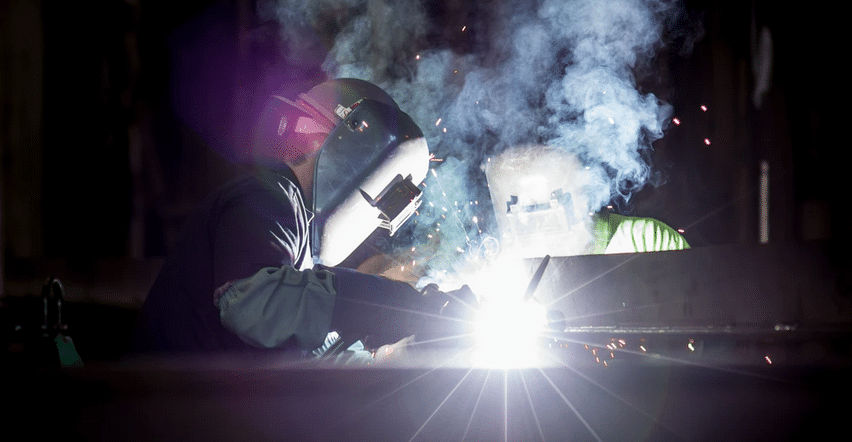
Again, this is another decision that mostly comes down to personal preference. A good rule of thumb is to ask yourself if you will be welding on a regular basis or as part of your job. If the answer is yes, then purchasing a helmet is a good investment that will save money in the long run. You can buy one tailored to your needs that is fitted correctly to you.
Beginners and people who will only be welding every now and then might be best served by renting. You can find rental helmets at your local home improvement store. This can save money by not having to constantly replace batteries, as you won’t need to service them yourself.
Investing in one main helmet suited to most jobs and then renting ones better suited to specialist jobs is a good idea for professionals.
So, Which Welding Helmet Should You Pick?
There are now so many options on the market that it’s normal for beginner welders to be overwhelmed. Dozens of brands sell different helmets with vastly different specs, and it’s up to you to narrow down which features you need in a welding helmet.
Below are some brands that produce top-quality best welding helmets according to different categories:
Auto-darkening welding helmet brands
Lincoln is a brand known for making some of the best auto-darkening welding helmet products currently out there and is a top choice of expert welders.
Best Budget Welding Helmet Brands
Honeywell, Kimberly-Clark, and 3M produce some of the best budget welding helmet models. All three companies are respected international businesses that have been around for decades, and their longevity and experience show in their quality products.
Best Welding Helmet Under $200
Welders looking to spend under $100 dollars on a helmet have numerous options. However, they need to remember that inexpensive models may not offer enough protection for some jobs.
The Arcpro20704 and the Miller251292 are considered to be some of the best welding helmets under $100. They both come in just under $100 dollars and feature all the basic requirements welders like to see in their helmets. Bear in mind that these should be kept for small or personal projects only.
Best Welding Helmet For Beginners
For those just starting in the world of welding, finding the right helmet is crucial. Look for a basic welding helmet with essential features like reliable sensors, comfortable headgear, and a clear lens. Brands like Lincoln Electric and Hobart offer budget-friendly options that provide decent protection without breaking the bank. Consider the popular Miller Digital Infinity for a cool, digital helmet that won’t overwhelm beginners with too many features. Check out Amazon for competitive prices and deals on these entry-level welding helmets.
Best Welding Helmets For Sensitive Eyes
If you have sensitive eyes, protecting them during welding is paramount. Opt for a welding helmet with true color clarity and digital infinity technology, like the premium Miller Digital Infinity or the optrel brand. These helmets offer excellent clarity and color perception, ensuring your eyes stay comfortable even during long welding sessions. Look for special lens coatings that reduce glare and eye strain in bright welding conditions. When it comes to your eyes, don’t compromise on quality.
Best Welding Helmet For Overhead
When working on overhead welding projects, you need a helmet that provides superior comfort and safety. Consider helmets with lightweight designs and comfortable headgear to reduce strain during extended use. Brands like ESAB and Jackson offer welding helmets designed for overhead work, with features such as impact resistance and optimal visibility through the lens. Check for deals and competitive prices on Amazon to find the right helmet for your overhead welding needs.
Best Welding Helmet for MIG Welding
The best welding helmet for MIG welding can be found from the likes of ESAB or Lincoln. Because of the intricacy of using metal inert gas to perform this type of work, safety gear for MIG work needs to be made of the strongest materials and offer superior protection.MIG welding requires a helmet that offers reliable protection and visibility. Look for helmets from trusted brands like Miller, ESAB, and Hobart, known for their MIG welding expertise. Opt for digital infinity helmets with clear lenses and sensors that react quickly to arc changes. Consider premium models for the best overall experience. Miller Digital Infinity and ESAB helmets are popular choices among MIG welders for their comfortable headgear and adjustable settings. Shop on Amazon for competitive prices and top-notch MIG welding helmets.
Verdict On Picking The Best Welding Helmet
Deciding on a welding helmet is a huge decision for a welder. It’s arguably the most important item of personal protective equipment, as it protects the eyes, lungs, and heads from serious damage. Picking the wrong equipment could lead to serious injury, but choosing the right one will keep you safe and even enable you to work better than ever.
We hope this guide has pointed you in the right direction for finding the best welding helmet for your needs. There is no one ‘best’ welding helmet out there, but taking the time to research the available options will ensure you pick a helmet that won’t let you down.
